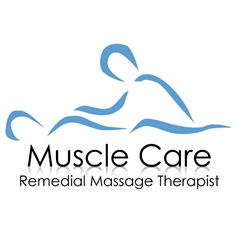We offer a large range of services at Muscle Care, including:
- Remedial Massage

- Deep Tissue
- Relaxation Massage
- Sports Massage
- Myofascial Dry Needling
- Cupping
- Myofascial Release
- Trigger Point Therapy
Remedial Massage
Remedial massage is the assessment and treatment of the muscles, tendons, ligaments and connective tissues of the body to assist in rehabilitation, pain and injury management. It’s performed to create conditions for the body to return to normal health after injury. If a patient has suffered a moderate injury resulting in structural pain and/or loss of function, then remediation is required to reduce or eliminate pain and restore that function. Remedial massage is designed to balance muscle/soft tissue length, tension, tone which will in turn promote the return to normal joint/capsular/bone position; increase the flow of blood and lymph, particularly in the injured areas.
Deep Tissue
Is a therapeutic treatment that helps to restore function to injured “soft tissue” (muscle, tendons and ligaments). It is a strong and deep massage which is great for muscle spasms and dissolving muscular tension.
Relaxation Massage
Various gentle techniques are used to help relax sore, tired muscles and loosen stressful tension that build up inside. The therapist responds to the patient’s body enabling the most effective form of relaxation massage possible.
Sports Massage
Combines different massage techniques to enhance sport performance and aid in quick recovery. It can be tailored to concentrate on the muscles relevant to your sport/activity. An effective component of any training program.
Myofascial Dry Needling
Treatment involves the insertion of solid, filament needle, as is used in the practice of acupuncture, usually in or around Myofascial Trigger Points. Myofascial Trigger Points have been described as a “hyper-irritable spot within a skeletal muscle”. Myofascial Trigger Points are points in muscles which are painful when pushed. Trigger points can refer pain and create dysfunction elsewhere in the body.
What is Myofascial Dry Needling?
Myofascial dry needling is a therapy that has been adapted from acupuncture in that it uses fine needles applied to the musculoskeletal system in order to deactivate myofascial trigger points. A myofascial trigger point can be defined as a hyperirritable spot in a skeletal muscle that is painful when compressed and can cause referred pain or tenderness. However, you should not confuse dry needling with acupuncture as they are actually two different things. Acupuncture uses points that lie along the body’s meridians or energy channels, while myofascial dry needling uses points that are defined by western based anatomy and physiology.
What is Myofascial Dry Needling Used For?
It is commonly used for treating conditions such as fibromyalgia, back pain, headaches and migraine, joint pain, osteoarthritis, inflammatory conditions such as tendonitis, post surgery conditions, and acute or chronic trigger point pain. Fine acupuncture needles are inserted into the trigger points and this can stimulate the points, desensitising or deactivating them and the associated referred pain, causing pain relief, healing, and also stimulating the production of endorphins.
Cupping
A partial vacuum is created in cups placed on the skin either by means of heat or suction. This draws up the underlying tissues. When the cup is left in place on the skin for a few minutes, blood stasis is formed and localized healing takes place. Cupping has also been found to affect the body up to four inches into the tissues, causing tissues to release toxins, activate the lymphatic system, help activate and clear the veins, arteries and capillaries, activate the skin and release any fascia build ups.
Myofascial Release
Myofascial Release is a very effective hands-on technique that provides sustained pressure into myofascial restrictions to eliminate pain and restore motion. In the normal healthy state, the fascia is relaxed and wavy in configuration. It has the ability to stretch and move without restriction. When we experience physical trauma, scarring, or inflammation, however, the fascia loses its pliability. It becomes tight, restricted and a source of tension to the rest of the body. Trauma, such as a fall, whiplash, surgery or just habitual poor posture over time and repetitive stress injuries has cumulative effects.
Trigger Point Therapy
Trigger points, also known as myofascial trigger points, are areas of hyperirritability in the soft tissue structure. These can be acute sources of pain or latent, unnoticed by the client until pressure is applied by the practitioner. Treatment consists of physical therapy, manipulation and stretching. A firm digital pressure is applied by the practitioner, who is able to locate the specific points causing pain and restricted movement and these may often be located in places different to where the client actually feels the pain.
